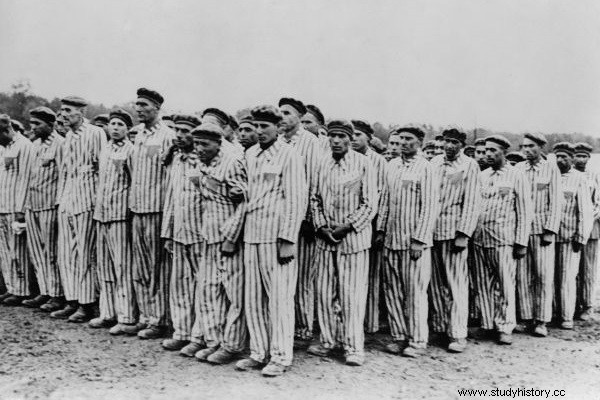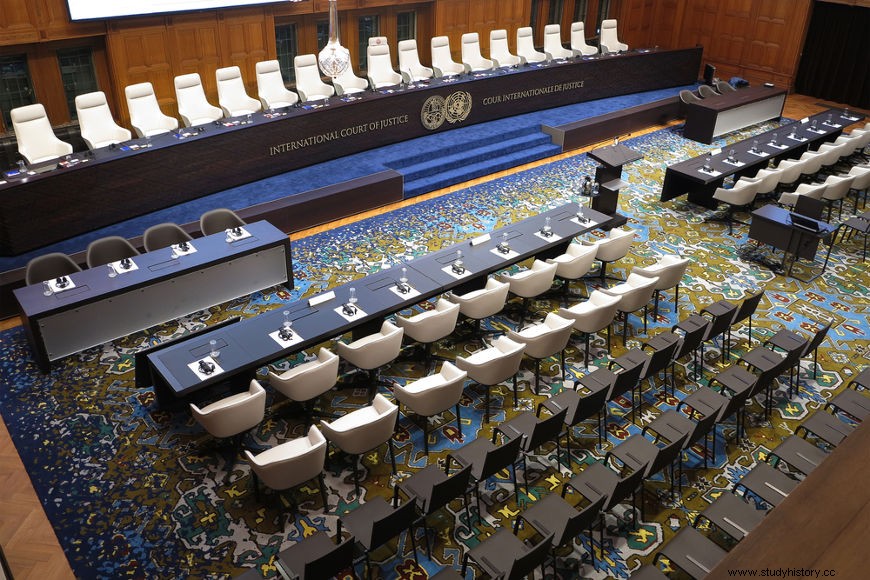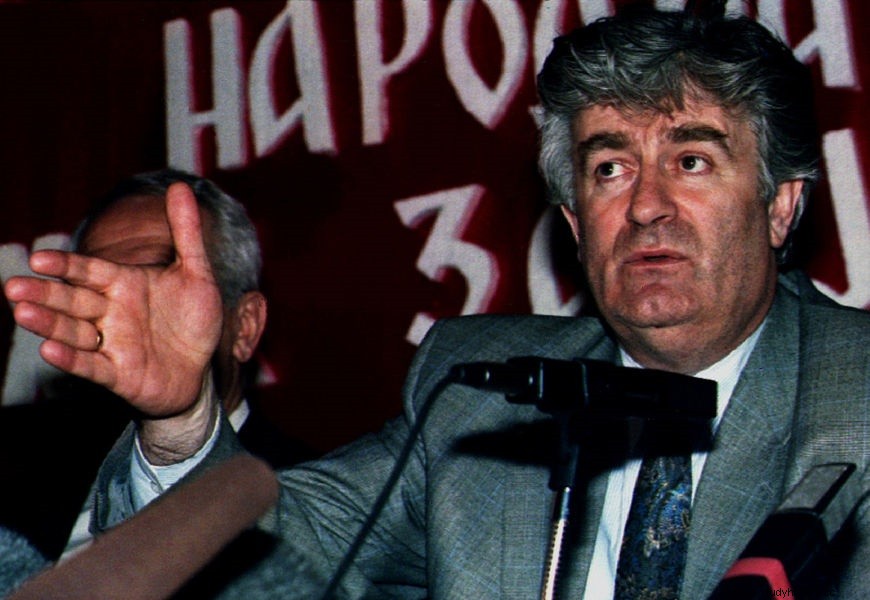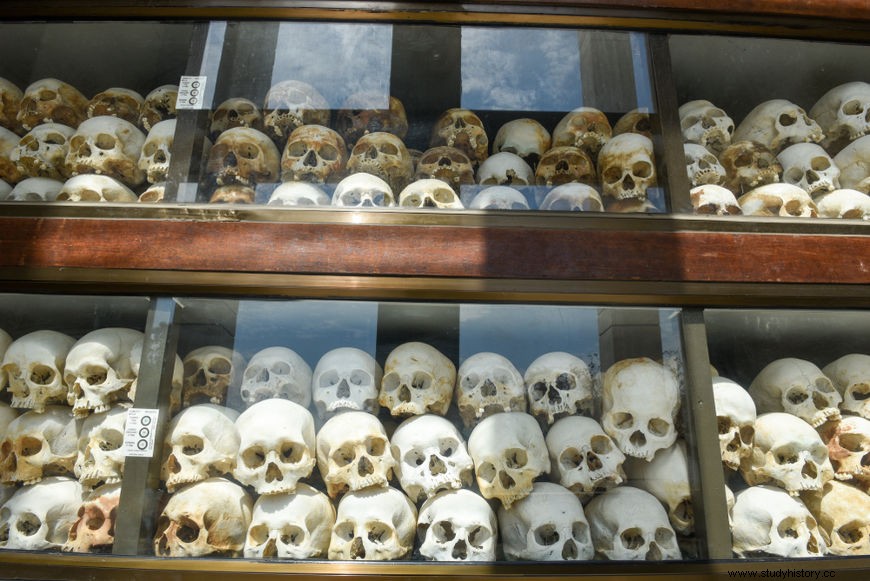Genocide is the word used to refer to actions taken by certain groups with the aim of exterminating other groups because of their option religious , ideological , or for questions related to ethnicity , race and nationality . This term was coined by a Jewish lawyer in the 1940s, due to events related to the Holocaust.
Currently, genocide is considered a crime against humanity . This convention was defined through a document written by the UN also in the 1940s. The 20th century had countless examples of genocidal policies practiced in different parts of the planet. The International Criminal Court in The Hague can be convened to try the crimes of genocide.
Term Origin

The word genocide is a modern creation to refer to the atrocities committed in events such as the Holocaust. It emerged in the 1940s and was proposed by a Jewish lawyer named Raphael Lemkin . Lemkin's proposal was precisely to name the actions of the Nazis against Jews during the Holocaust. Nevertheless, the word can be used for any type of genocide committed throughout human history.
Lemkin proposed this word in a book, written by him, completed in 1943 and published in 1944, called Axis rule in occupied Europe (can be translated as “Axis Dominion in Occupied Europe”). Lemkin's thesis shows that the Nazis used the genocide of minorities, such as Jews and Gypsies, to achieve the goals stipulated in Nazi ideology.
The word genocide is the result of the junction of two terms, one from the Greek language, and the other from the Latin language. Lemkin used genos , a Greek word meaning “race”, and from cide , Latin word meaning "to kill". Genos and cide , therefore, gave rise to genocide. The idea of the expression deals with actions carried out with the aim of exterminating a group of people.
Therefore, genocide does not refer to the elimination of individuals as such only. The word concerns the elimination of individuals who are part of a group , and its elimination aims at the end of the group itself. The criteria for a genocide can be based on religion, ethnicity, race, culture and nationality.
Login also :Einsatzgruppen – the extermination group responsible for the execution of Jews
What does the UN say about genocide?
Conventions such as Human Rights and the current understanding of genocide are post-World War II achievements. The horrors of the Holocaust shocked the world to such an extent that a series of actions were taken to prevent this type of event from happening again.
The emergence of United Nations , the UN, took place at the end of 1945, and, through it, measures were taken in defense of peace. In the case of genocide, at a General Assembly held on December 9, 1948, Resolution 260 A (III), was issued known as “Convention for the Prevention and Punishment of the Crime of Genocide ”.
This document defines genocide as a crime against humanity. He also defined the means by which this practice is carried out, which are:
- Killing of group members;
- Serious assault on the physical and mental integrity of group members;
- Deliberate submission of the group to conditions of existence that will lead to its physical destruction, in whole or in part;
- Measures to prevent births within the group;
- Forcibly transferring children from the group to another group.
Finally, it was defined in this document that those who carry out genocidal practices must be tried, either by courts set up by sovereign States, or by international courts, as the case may be| 1| . At the time, of the 188 members of the UN, 100 had ratified this convention.

Currently, genocide crimes are a matter for the international law . Thus, a State, when denouncing a crime of this type, can set up a specific court to judge those who were involved in it. Furthermore, if necessary, the judgment can be taken to the international jurisdiction practiced by the International Criminal Court, located in The Hague, the Netherlands.
A recent case that gained international attention was the trials of genocide crimes committed against Bosnian Muslims (called Bosniaks) during the Bosnian War. This genocide was committed by both Serbs and Croats who did not approve of the Bosnian independence movement.

Two of the best-known names that have been tried in The Hague, for the events in the Bosnian War, were those of Radovan Karadzic and Ratko Mladic , both very important during that war on the part of the Bosnian Serbs. The first was president of the Serbs in Bosnia (Republic Srpska), and the second, an army general who fought the Bosniaks.
Radovan Karadzic was sentenced to 40 years in prison for the crime of genocide committed during the Srebrenica Massacre and the siege of Sarajevo — the Bosnian capital surrounded by Serb troops who used snipers to kill civilians walking through the city's streets. Ratko Mladic was sentenced to life in prison also for genocide and crimes against humanity. Their actions were framed by the Hague Court as deliberate to promote ethnic cleansing in the former Yugoslavia.
Login also :Katyn Massacre – the massacre of Poles carried out by the Stalinist USSR
Examples of Genocide
Throughout history, countless examples of genocide can be raised, as well as today. The 20th century was prolific in carrying out genocides that took place in different corners of the planet. The best known of these is the Holocaust, which gave rise to the word, as we have seen.
At the turn of the 19th century to the 20th century, the genocide in the Belgian Congo took place as a result of the inhumane colonization policy imposed by the Belgians. An estimated 10 million Congolese died through the practices carried out by the Belgians. In the same period, the Germans were responsible for the genocide of two ethnic groups that inhabited Namibia:the herero and the nama . It is estimated that 80,000 people of both ethnicities have been killed .
There were also genocidal practices against Armenians by the Turks, still in the period of existence of the Ottoman Empire, in the decade of 1910. The Armenian Genocide resulted in the death of at least 1.5 million people as a result of summary executions or the appalling conditions that the Armenian population had to face in the period.

In the second half of the 20th century there was the Cambodian Genocide by the Khmer government Red , the political party that ruled Cambodia in the 1970s. This party imposed a utopia inspired by Maoism and began to persecute ethnic minorities and any group in the country that did not fit the ideals it defended. It is estimated that 1.5 million people have died in Cambodia.
Two of the most recent cases took place in Rwanda , in the 1990s, and in Myanmar , in 2017. In Rwanda, as a result of the civil war, the Hutus group, a majority ethnic group, began to persecute the Tutsis. As a result, around 800,000 Tutsis were killed by Hutus, many by machete blows.
The Myanmar case is more recent and dates back to 2017. It was carried out by the Asian country's own government against a minority ethnic group known as the Rohingya . This ethnicity is a practitioner of Islam and, historically, marginalized in Myanmar, a predominantly Buddhist country. More than 20,000 people from this group are believed to have been killed and that more than 700,000 have fled the country due to persecution.
Login also :Was Holodomor a genocide?
Genocide case in Brazil
Brazil, throughout its history, has a case recognized by justice as genocide. It happened in 1993, when miners invaded the territory of the Yanomâmis , indigenous people who live in lands located in Roraima, set up illegal mining and exterminated these indigenous people while they defended their territory from invasions.
This mass murder was marked as Haximu Massacre. In it, the miners surrounded the Haximu community and killed 16 Yanomami in a very cruel way. The case was taken to the Federal Supreme Court, which, years later, defined it as genocide. It was the first and only example of this type of crime recognized in our history.
Some of the miners involved were tried and sentenced to 20 years in prison. This case had great repercussion both in Brazil and abroad.
Note
|1| Convention for the Prevention and Punishment of the Crime of Genocide. To access, click here.
Image credits
[1] Everett Historical and Shutterstock
[2] Ankor Light and Shutterstock
[3] Northfoto and Shutterstock
[4] Stefano Ember and Shutterstock
